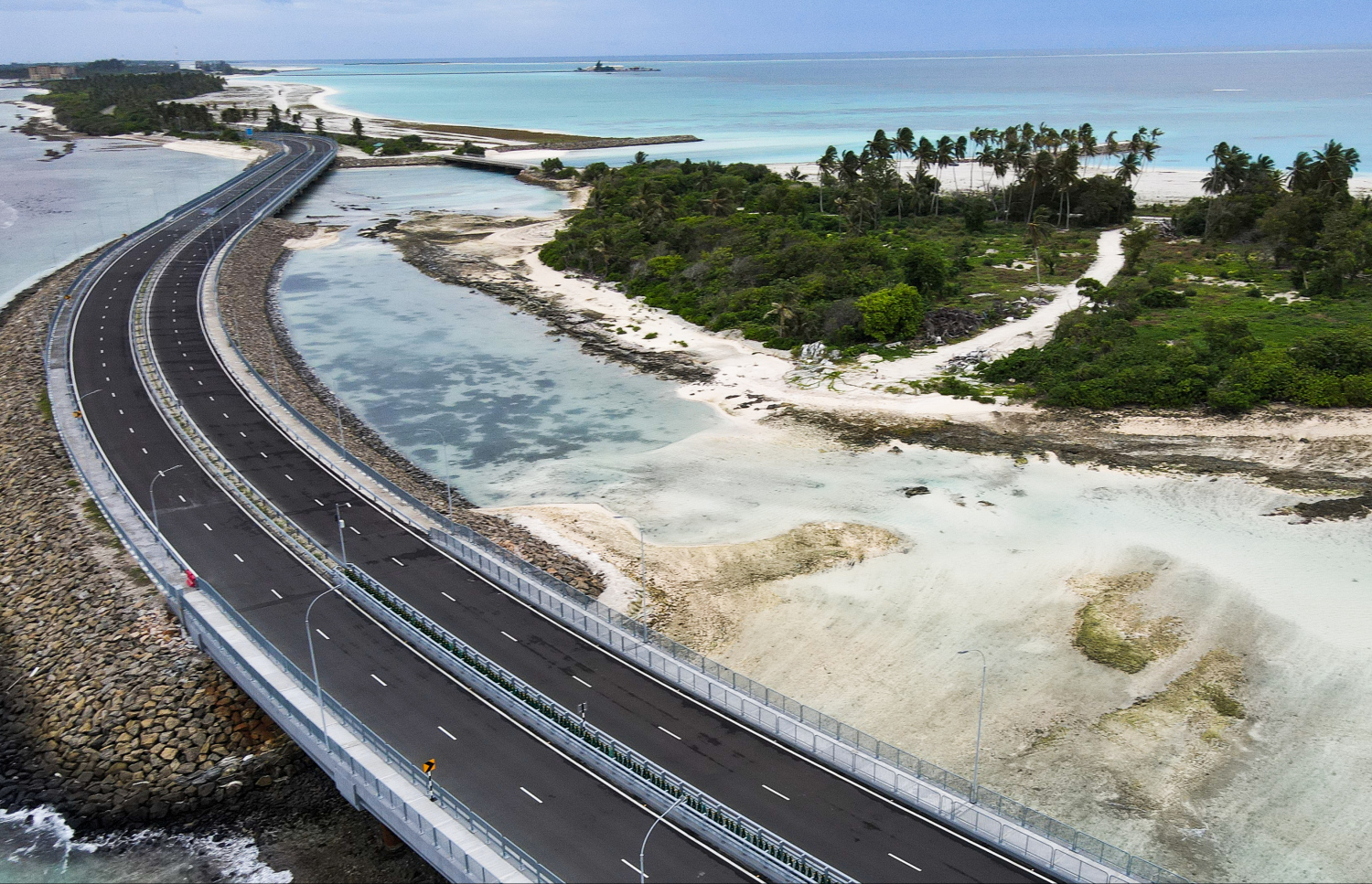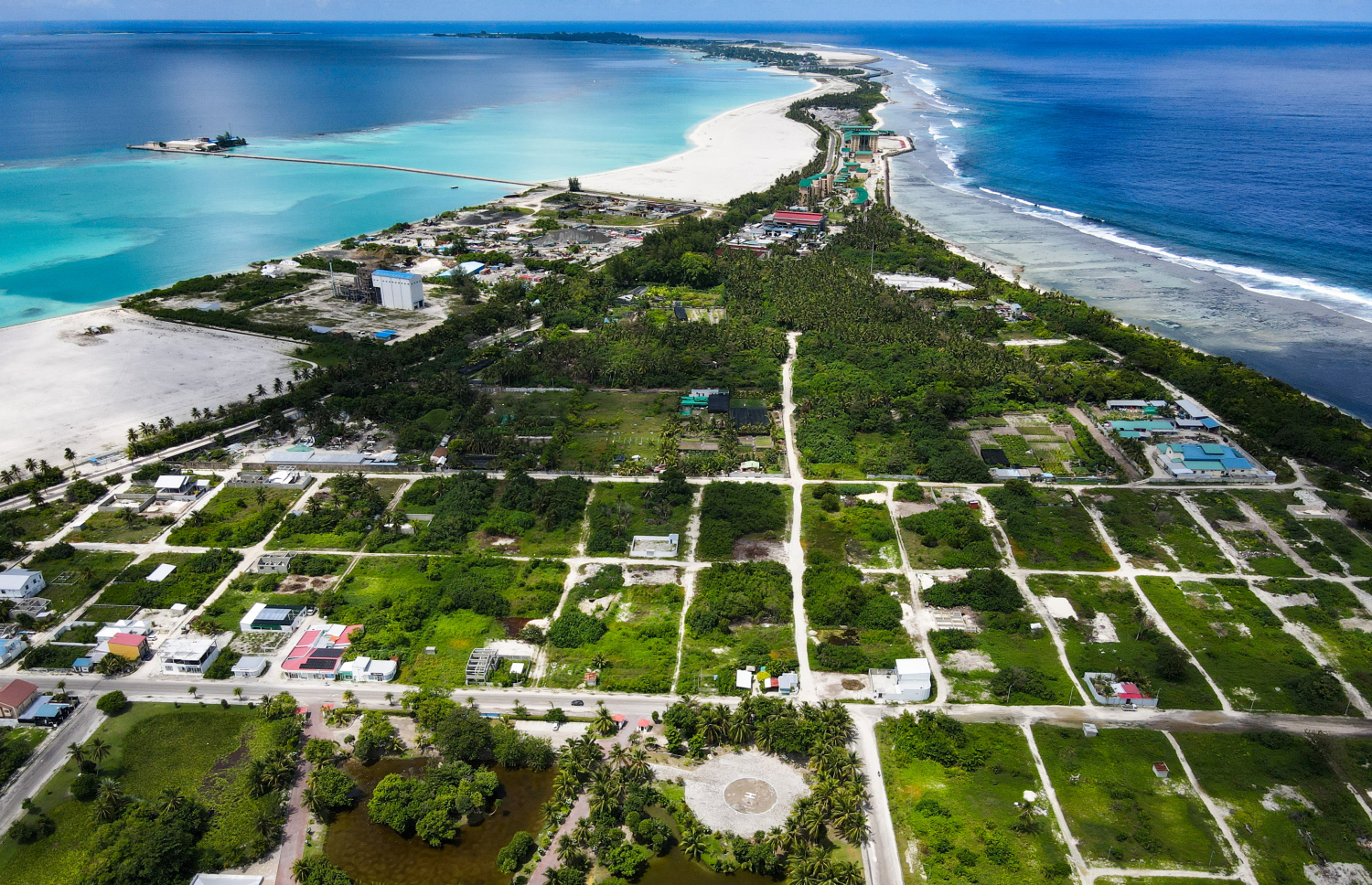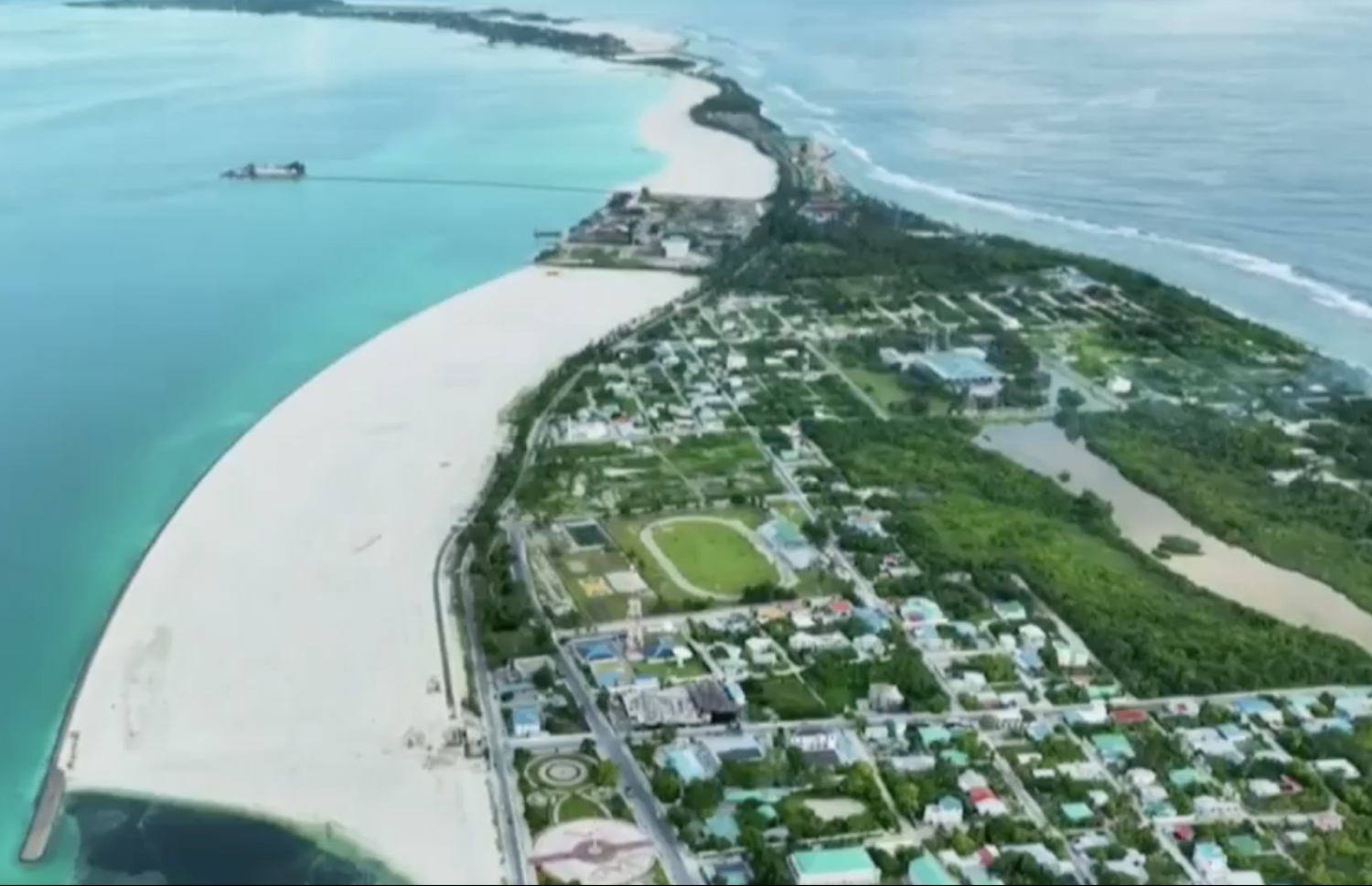Transparency Maldives, in collaboration with Project ThimaaVeshi, conducted a study on perceptions and attitudes towards urban development in Addu City, titled “ <a href="https://transparency.mv/publications/development-through-an-environmental-lens-a-study-on-perceptions-and-attitudes-towards-urban-development-in-addu-city/">Development Through an Environmental Lens: A Study on Perceptions and Attitudes Towards Urban Development in Addu City</a>”.
The study is based on data collected across all six islands in Addu.
Findings from the study lean heavily towards deep public disillusionment with the current development initiatives, which the report describes as ‘marked by top-down planning, weak environmental oversight and limited accountability’.
The proposed 14km bridge set to link the connected western islands of Addu (Gan, Feydhoo, Maradhoo-Feydhoo, Maradhoo and Hithadhoo) with the eastern isolated island of Hulhumeedhoo emerged as a focal point of broader discontent between the west and the east, the report reads.
Responses from Hulhumeedhoo supported the project more compared to the connected islands, as residents associate the bridge with easier access to better services in healthcare, education, etc. However, even in Hulhumeedhoo, there were environmental concerns raised about the bridge, with residents leaning more towards the island’s independent development.
The report states that Addu’s development has long been shaped by shifting political agendas, where large-scale projects serve more as vote-winning tools than coherent, community-driven strategies. It goes on to say that centralized visions for Addu, divorced from its ecological and cultural realities, have led to costly projects that replicate Male’s social and environmental decay.
It raises concerns that this top-down approach to development continues to marginalize both sustainability and local environmental priorities.
450 study participants were split into youth (16-25), adults (26-36), middle-aged (37-58), pre-retirement (59-64) and seniors (65+), with 165 being males and 285, females.
Residents describe Addu not as a city, but as a rough sketch of what a city could have been: one laid to waste by the very institutions tasked with building it<b>Development Through an Environmental Lens Study</b>
This study asks of Addu residents the fundamental questions: What does development mean to them? How do they perceive the trajectory of urban growth in Addu?
Environmental Legislation
Of the 450 study participants, 267 said that they are familiar with the environment protection articles in the Constitution (Articles 22, 67 and 232).
A pattern emerged where awareness rises linearly from young to old, with 69.9% in the pre-retirement group, to 50.5% within youth.
212 participants expressed dissatisfaction with existing laws in environmental protection. A clear majority of respondents also felt that the education system and responsible ministries do not adequately teach or communicate the laws to the public.
While 96.8% affirmed that EIAs are essential before major development projects, only 12.3% believe the current EIA system achieves its intended purpose. 89.1% respondents are in consensus that the environment should be safeguarded in the face of development.
TM and PTV recommend updating the school curriculum to include comprehensive education on environmental legislation, and to provide related training to teachers.
They also urge to develop locally tailored awareness programs that focus on community specific concerns. Youth-led forums can also be created, encouraging students to actively participate in conservation, policymaking dialogue and awareness campaigns.
TM and PTV also urges authorities to revise EIA procedures to ensure public engagement before project finalization, and to establish safeguards to ensure the independence of the EIA processes.

Development Indicators
61.2% of respondents believe that Addu does not have access to a well-established healthcare system.
When it comes to education, 47.1% view school level education positively, but only 22.4% feel the same about higher education. Dissatisfaction is higher in Hulhumeedhoo, at 65.9%, compared to 49.2% in the connected islands. This indicates that discontent is tied to limited local access, with Hulhumeedhoo being isolated from the other islands of the atoll.
Public sentiment on employment is overwhelmingly negative, with 72.4% disagreeing that good job opportunities are available.
The majority of respondents believe that a city can only be considered developed when all necessary public facilities are made accessible without major inconvenience.
Perceptions of development quality in Addu also came out largely negative, with 58.2% respondents disagreeing that projects are well-designed. Respondents (61.1%) also felt that there is insufficient community involvement in development discussions.
TM and PTV recommend developing island-specific urbanisation guidelines. It also emphasizes the need to hold public consultations to gauge what a ‘developed Addu’ means to residents.
They also feel that introducing an online portal through which citizens can track timelines, costs and progress of projects would be beneficial.
The civil society organizations also call for the enforcement of penalties for misuse of funds, poor quality construction and lack of post construction maintenance.
Hithadhoo-Hulhumeedhoo Bridge
A majority of respondents, spanning across islands and demographics, stated that they are ‘somewhat informed’ about the bridge project, suggesting that in-depth understanding of its scope and implications remain limited. 26.22% reported themselves as being ‘not informed at all’.
61.3% believe the project is not being handled transparently, with scepticism higher amongst older groups.
As for the question of whether such a bridge is an immediate necessity, 47.1% feel that it is not, 35.4% believe it is, and the remaining 17.6% were neutral. Geographically, in Hulhumeedhoo, 57.3% agree that the bridge is an immediate need, compared to just 30.5% from the connected islands.
Perceptions on how the bridge would affect the daily lives of residents were mixed - with 67.7% reporting they felt it would have no personal impact.
Most felt it would bring about positive changes, such as improved travel accessibility, enhanced economic and employment opportunities and better access to healthcare.
In Hulhumeedhoo, 62.2% felt the bridge would impact them personally, owing to their seclusion from the connected islands and their higher need to rely on inter-island mobility.
TM and PTV call to align major development investments with reliable economic and demographic forecasts to ensure projects respond to actual community needs instead of advancing short-term political agendas.
They further recommend carrying out a comprehensive assessment of the Hithadhoo-Hulhumeedhoo Bridge project, factoring in economic, social and environmental impacts, the findings of which should be publicly available.

Environmental Perspectives
Environmental concerns are key amongst Addu residents. However, certainty around the bridge’s environmental impact varies, with 52.0% believing it will cause irreversible damage, and another 37.3% are unsure.
A strong majority of respondents are of the stance that the bridge will cause major damage to coral reefs, and 50.4% expect degradation of Manta Point’s appeal.
37.6% also harbour concerns that the bridge will negatively affect air quality in the region.
TM and PTV urge authorities to ensure the strict protection of the Manta Point and other ecologically sensitive areas by designating no-development buffer zones.
Socio-Economic Perspectives
These concerns are widespread, with 52.7% anticipating negative impacts and another 28.2% being unsure.
More than half of the respondents believe that the bridge will pave the way for more employment opportunities, with optimism highest in Hulhumeedhoo.
However, concerns of congestion and elevated criminal activity as a result of the bridge are also significant.
TM and PTV recommend that national regional plans are mandated to first allocate funding to essential services such as education, healthcare and waste management before approving large-scale projects.

“Residents describe Addu not as a city, but as a rough sketch of what a city could have been: one laid to waste by the very institutions tasked with building it,” the report reads.
“In pursuing the myth of modernization, we are not only replicating a vision of development that is fundamentally misaligned with our geographical context, but also actively undermining the ecological systems that sustain us. The environmentally null, socially dysfunctional dystopia cultivated in Male’ stand testament to a development paradigm that does not work for the Maldives - and perhaps never did, or ever will.”
“True development necessitates organic, decentralized growth rather than top-down, autocratic imposition. It must be grounded in, and more importantly so, contextualized to the values, needs and capacities of local communities and the ecosystems they call home.”